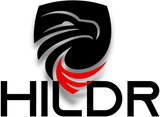FACE SHIELDS
What are the benefits of wearing a protective face shield?
A face shield can provide additional protection to other facial areas that safety glasses or goggles cannot. Face shields are considered to be a secondary protector and must always be worn over protective safety glasses or goggles. To provide better face and eye protection, a face shield should have crown and chin protection and wrap around the face to the point of the ear. Disposable face shields for medical personnel made of light weight films that are attached to a surgical mask or fit loosely around the face should not be relied upon as optimal protection. They will protect the eyes and all parts of the face.
What are face shields, and how are they used for protection from bacteria and viruses?
A face shield is a transparent barrier that covers the face and is typically open at the sides and bottom. A face shield is a form of personal protective equipment (ppe) primarily used by health care workers to protect their face (eyes, nose, and mouth) from splashes and sprays of body fluids. Face shields are not commonly used alone, but are often worn with other protective equipment, such as respirators or surgical masks, to protect the wearer from bacteria and viruses. Examples include a nurse caring for a hospitalized patient infected with a contagious disease or a health professional collecting a nasal sample from a person being tested for a disease.
In contrast, face coverings (cloth or surgical masks) that fit snugly over the nose and mouth are used to prevent the spread of diseases to other people in the event that the wearer of the mask is infected with a disease and doesn’t know it, as well as to provide some protection for the wearer.
What attributes should I look for in a face shield?
- The following attributes are strongly recommended when purchasing or manufacturing a face shield:
- Extends down below the chin
- Extends around to the ears
- No gap between the forehead and the visor (or cover the gap)
- Addition of a cloth drape extending from the bottom edge of the shield and tucked into the shirt or collar, when a respirator, mask, or cloth face covering is not worn.
Are the face shields FDA Approved?
Yes, they are FDA approved as a Class 1 device.
What materials are used to make the clear shield of these face shields?
The face shield is typically made from PET, PET-G, acetate, or polycarbonate sheets with a thickness of .005” – .010”. The head strap is typically elastic. Because of the emergency nature of production, actual materials used in each face shield may vary.
Are the face shields intended to be reusable?
This is up to each healthcare facility to decide. Feedback from physicians and infection control groups suggests that the Face Shield product is suitable for reuse with appropriate cleaning in between patients. Each hospital should determine appropriate use / reuse protocols based on a review of the product by the hospital’s Infection Control group.

